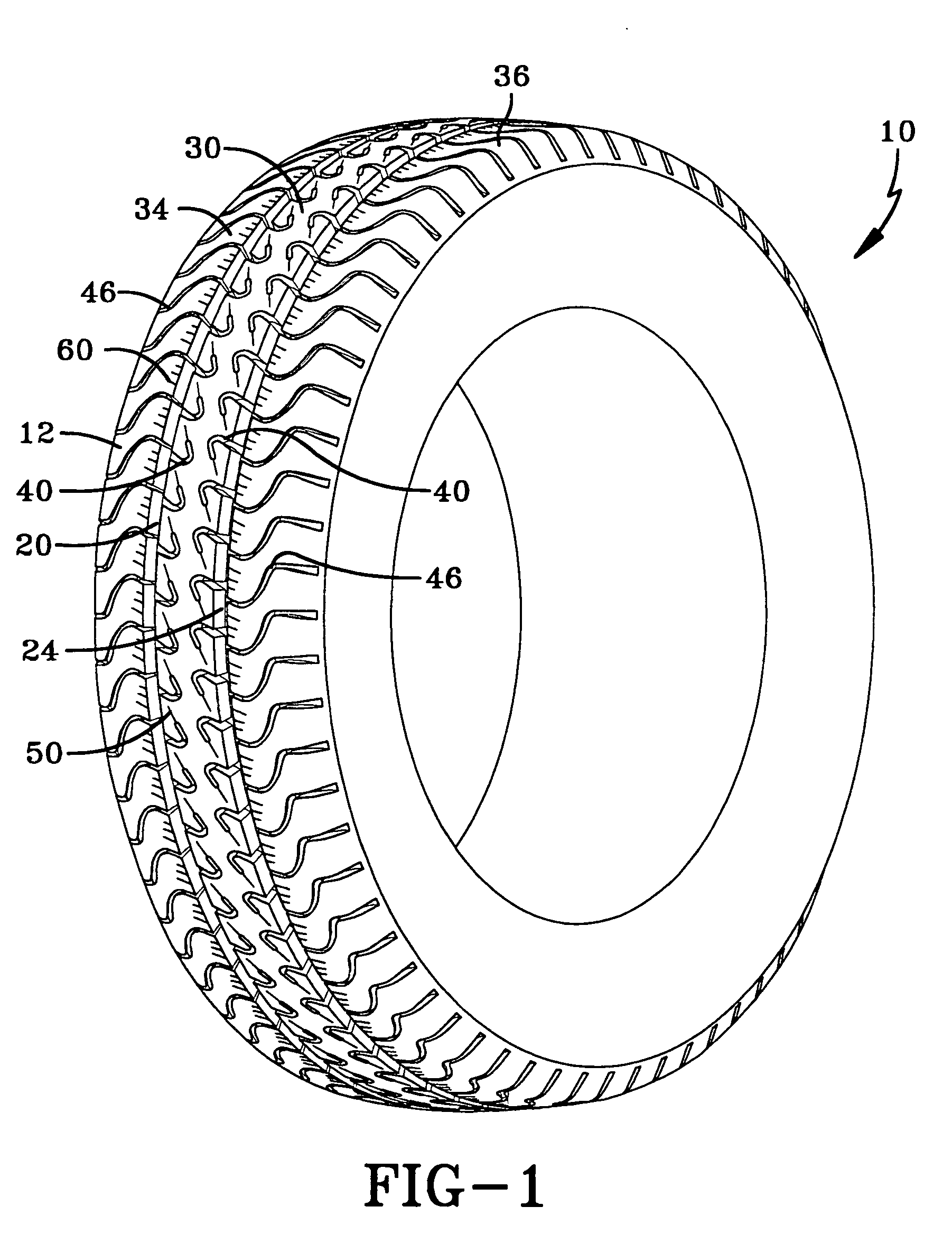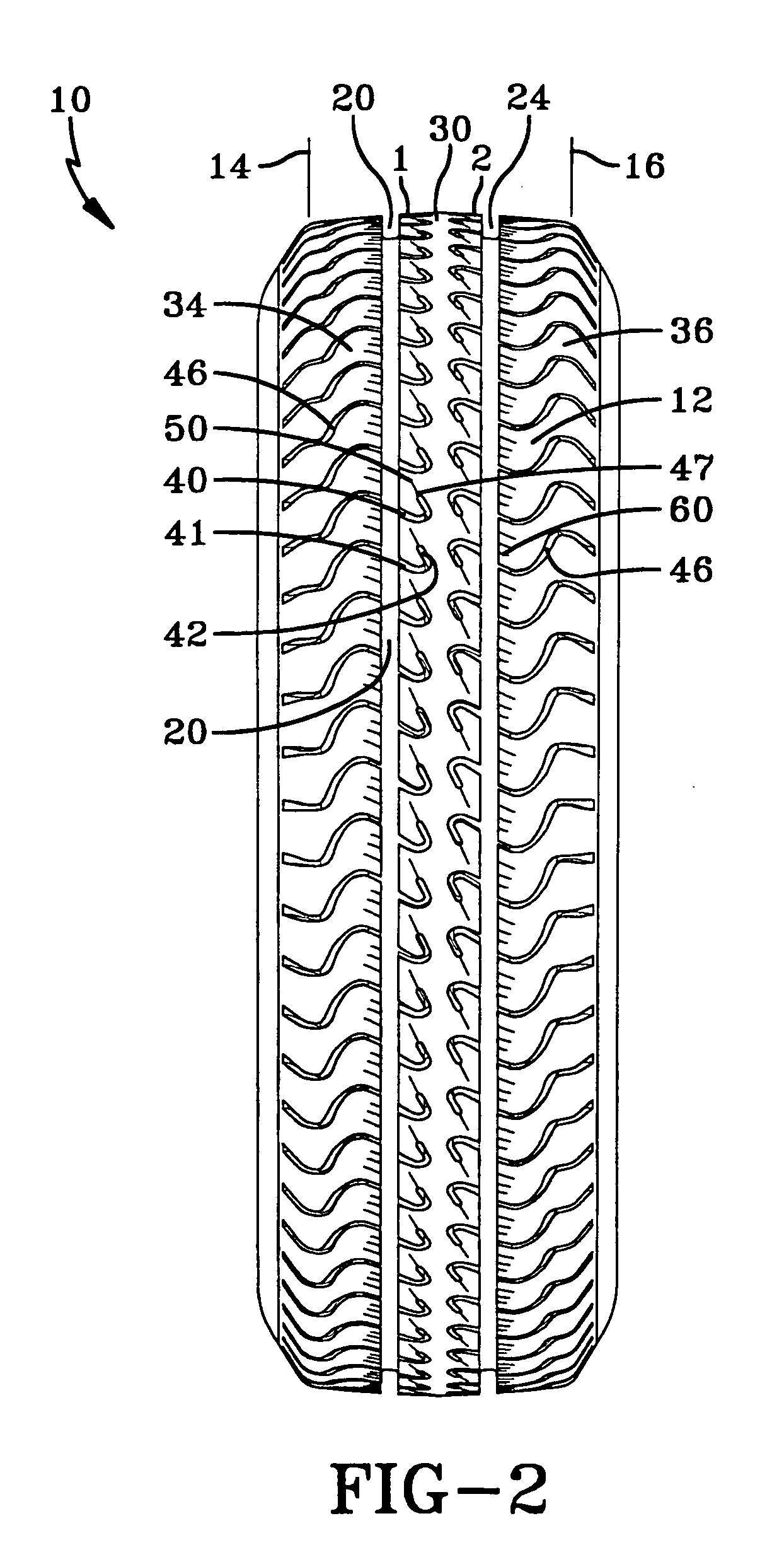Tread for a light truck or automobile tire
a technology for automobile tires and light trucks, applied in vehicle components, non-skid devices, transportation and packaging, etc., can solve the problems of poor tread wear, low tread wear resistance, and low tread wear resistance, and achieve the effect of improving traction
- Summary
- Abstract
- Description
- Claims
- Application Information
AI Technical Summary
Benefits of technology
Problems solved by technology
Method used
Image
Examples
first embodiment
[0051]With the reference to FIGS. 1–5, a tire (10) having a tread (12) according to the present invention is shown. The tread (12) when configured annularly has an axis of rotation R, first and second lateral edges (14, 16).
[0052]As shown in FIGS. 4 and 9, the tread (12) when used with a tire (10) employs a tire (10) preferably having a carcass (70) with one or more plies (72) reinforced by radially extending synthetic or metal cords and a pair of substantially inextensible bead cores (74), an apex (76) radially above the bead cores 74 and a belt reinforcing structure (77) radially outward of the plies (72). The tire (10) as shown has an air impervious halobutyl liner (79) and a rubber chafer (78) common in tubeless type tires.
[0053]While the carcass is considered important, the focus of the present invention resides in the tread (12) and its unique construction. In the first embodiment as shown in FIG. 1, the tread (12) has two circumferentially continuous grooves (20,24). Interpos...
second embodiment
[0060]All of the features described above in reference to the tire (10) and tread (12) of FIGS. 1–5 apply to the second embodiment tire (10) of FIGS. 6 through 9.
[0061]As shown in FIG. 6, the second embodiment tire (10) has the tread (12) having three circumferentially continuous grooves (20,22,24) and two ribs (30,32) located between the grooves (20,22,24).
[0062]In this embodiment the groove (22) is a common groove to both adjacent ribs (30,32). The hook-shaped semi-blind grooves (40) of each rib (30,32) intersecting the common circumferentially continuous groove (22), intersects the groove (22) at a substantially circumferentially aligned location relative to the intersection of the axially adjacent hook-shaped semi-blind grooves (40) of the other rib (30, or 32).
[0063]An important difference from the first embodiment tread (12) having a single central rib (30) is that the hook-shaped semi-blind grooves (40) in the rib (30) are arranged in a first row (1) and a second row (2) wher...
PUM
 Login to View More
Login to View More Abstract
Description
Claims
Application Information
 Login to View More
Login to View More - R&D
- Intellectual Property
- Life Sciences
- Materials
- Tech Scout
- Unparalleled Data Quality
- Higher Quality Content
- 60% Fewer Hallucinations
Browse by: Latest US Patents, China's latest patents, Technical Efficacy Thesaurus, Application Domain, Technology Topic, Popular Technical Reports.
© 2025 PatSnap. All rights reserved.Legal|Privacy policy|Modern Slavery Act Transparency Statement|Sitemap|About US| Contact US: help@patsnap.com



